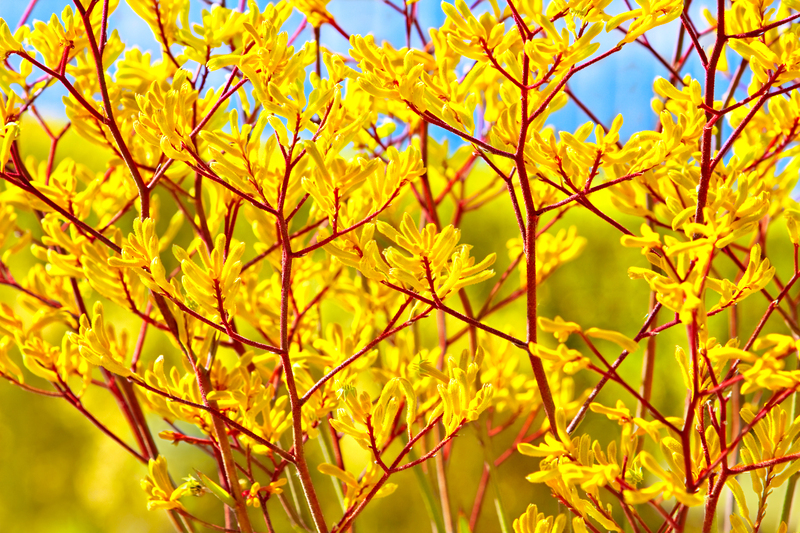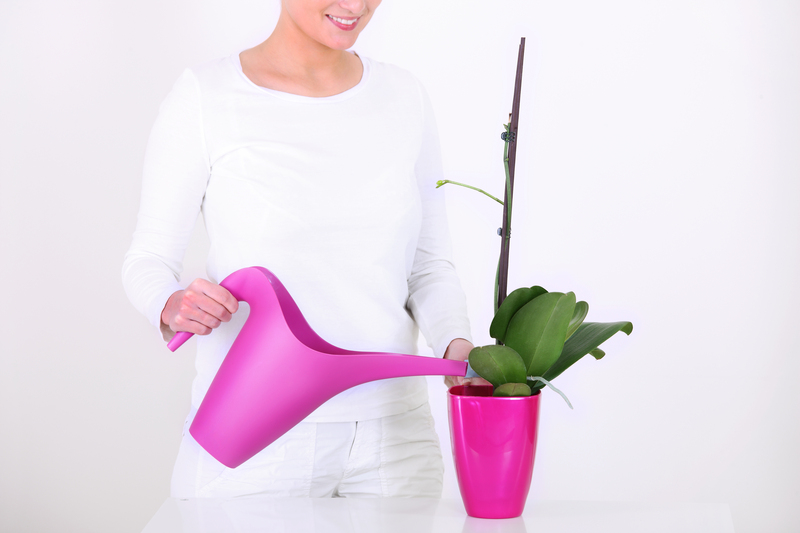Create a Verdant Herb Paradise in Your Backyard
Posted on 01/06/2025
Create a Verdant Herb Paradise in Your Backyard: A Comprehensive Guide
Herbs have enchanted human civilization for centuries with their aromatic scents, culinary enhancements, and natural healing powers. Imagine stepping out into your backyard, only to be welcomed by a lush tapestry of greens, fragrant leaves, and vibrant blooms--the epitome of a verdant herb paradise. With thoughtful planning and a touch of dedication, you can transform even the most modest outdoor space into an herbal oasis. Whether you're a seasoned gardener or a curious beginner, this comprehensive guide will empower you to cultivate a flourishing backyard herb garden brimming with life, flavor, and beauty.

Why Cultivate a Lush Herb Garden at Home?
- Freshness at Your Fingertips: There is nothing like snipping a sprig of rosemary or basil just moments before adding it to your meal.
- Natural Health Benefits: Many herbs such as mint, parsley, and oregano possess medicinal properties that can support wellness.
- Sustainable Living: Growing your own herbs reduces grocery costs and eliminates the need for plastic-wrapped supermarket herbs.
- Biodiversity Boost: Herb gardens attract pollinators and beneficial insects, enhancing the local ecosystem.
- Outdoor Ambiance: A thriving herb corner adds beauty and freshness, turning your backyard into a verdant retreat.
Planning Your Backyard Herbal Sanctuary
Designing your verdant backyard herb paradise starts with careful consideration of resources, climate, and personal desires. Here are key steps to plot your perfect herbal getaway:
1. Evaluate Your Space and Sunlight
Most culinary and medicinal herbs crave sunlight--ideally, 6-8 hours daily. Choose an area in your backyard that receives ample sunshine. Don't fret if you have partial shade: herbs like mint, chives, and parsley thrive even in lower light.
2. Assess Your Soil Quality
Healthy, well-draining soil is the secret to a flourishing herb garden. Conduct a basic test--squeeze a handful of earth; it should crumble, not stay clumped or turn muddy. Amend clay or sandy soils with rich compost or organic matter to achieve the perfect, loamy texture. Consider raised beds or containers if soil drainage is poor.
3. Decide on Garden Layout
- Traditional Rows: Suitable for large backyards, allowing easy crop rotation.
- Herb Spiral: An artistic, space-saving mound that creates microclimates for various species.
- Container Garden: Perfect for patios and small yards--mix and match pots for mobility and style.
- Companion Planting Beds: Integrate herbs among vegetables and flowers for natural pest control and beauty.
4. Choose the Right Herbs for Your Needs
Tailor your selection to your culinary habits, health interests, and local climate. Here's a list of wonderful options for your home herb sanctuary:
- Basil: Essential for Italian, Thai, and summer dishes.
- Rosemary: Hardy, aromatic, and a pollinator favorite.
- Thyme: Versatile and drought-tolerant.
- Mint: Vigorous--best grown in containers to prevent spreading.
- Oregano: Robust and flavorful, perfect for Mediterranean cuisine.
- Chives: Mild onion flavor, a great salad addition.
- Parsley: Flat-leaf and curly varieties--rich in vitamins C and K.
- Lemon Balm: Calming and fragrant, ideal for soothing teas.
Essential Steps to Creating Your Verdant Herb Paradise
1. Prepare Your Garden Beds or Containers
Start by clearing weeds and loosening soil. For raised beds or pots, use high-quality, organic potting soil. Mix in compost or aged manure for natural enrichment. Ensure containers have adequate drainage holes to avoid waterlogging.
2. Plant with Care
- Direct Sowing: Herbs like dill and coriander prefer being sown directly into the soil.
- Transplant Seedlings: Basil, rosemary, and sage do well when started indoors and moved outside after the last frost.
- Spacing: Follow package recommendations--crowding reduces airflow and increases disease risk.
3. Water Wisely
Herbs generally dislike "wet feet." Water early in the day using a gentle spray, targeting the soil, not the leaves. Most herbs thrive with about an inch of water weekly--more in peak summer. Adjust for rainfall and soil drainage.
4. Feed Naturally
Herbs aren't heavy feeders, but an occasional boost helps. Use well-rotted compost or a diluted organic fertilizer during peak growing months. Avoid overfeeding, as this can dilute flavors--particularly important for robust herbs like basil and sage.
5. Mulch and Maintain
Add a layer of mulch--straw, shredded leaves, or bark--around your herbs. Mulching retains moisture, suppresses weeds, and stabilizes soil temperature. Regularly remove weeds, dead leaves, and faded flowers to keep your herb garden vibrant and healthy.
Caring for Your Backyard Herb Garden
Pruning and Harvesting
Regular harvesting is crucial for bushiness and continuous growth. Snip herbs in the morning after the dew dries, but before the sun is intense. Use sharp scissors or pruners and cut above a leaf node to encourage branching. For perennial herbs like sage and thyme, trim after flowering to prevent woodiness.
Pest and Disease Management
Herbs are generally resistant to pests, but keep an eye out for aphids, slugs, and powdery mildew. Employ natural remedies--introduce ladybugs, handpick slugs, and spray a mild soap solution for aphids. Good air circulation, spacing, and well-draining soil are your best allies against disease.
Overwintering
Perennial herbs like chives, oregano, and thyme can withstand light frost. In colder climates, protect them with a thick mulch or transfer containers indoors. Bring annuals like basil inside before temperatures drop for a continuous supply.
Creative Ways to Enhance Your Herb Paradise
Edible Borders and Vertical Gardens
Frame pathways or garden beds with low-growing herbs like thyme or marjoram for a lush, aromatic border. Maximize small spaces with vertical herb planters, wall-mounted pockets, and hanging baskets. These not only conserve ground space but also create a living tapestry of diverse greens and blossoms.
Thematic Herb Beds
- Italian Flavors: Basil, oregano, sage, parsley, and rosemary.
- Tea Garden: Lemon balm, mint, chamomile, and lavender.
- Medicinal Plot: Calendula, echinacea, yarrow, and comfrey.
- Pollinator Haven: Thyme, borage, chives, and dill--irresistible to bees and butterflies.
Incorporate Herbs into Your Landscape Design
Interplant herbs among vegetables and ornamentals for beauty and functionality. For example, grow basil and marigolds near tomatoes for improved yield and pest resistance. Use lavender and rosemary to create low hedges or lining walkways for a Mediterranean touch.
Maximizing the Bounty: Storing and Using Your Backyard Herbs
Fresh Use
Enjoy the sensory pleasures of fresh herbs in salads, teas, dressings, and cooked meals. To retain peak flavor, add tender herbs like basil and parsley at the end of cooking, while robust varieties such as thyme and rosemary can be added earlier.
Drying and Freezing
- Drying: Hang small bunches in a dark, airy spot. Once crisp, store in airtight jars away from sunlight.
- Freezing: Chop and freeze herbs with a splash of water or olive oil in ice-cube trays for convenient, portioned use.
Herbal Infusions and DIY Products
Experiment with your herbal haven's bounty by creating infused oils, vinegars, bath sachets, and natural cleaning solutions. Fresh mint and lemon balm make refreshing iced teas, while lavender and rosemary infusions elevate simple syrups and cocktails.
Common Challenges and How to Overcome Them
- Limited Space: Utilize vertical planters, window boxes, or hanging baskets to cultivate a lush herb sanctuary even in small areas.
- Poor Soil: Improve it with compost, or switch to containers filled with quality potting mix.
- Disease Outbreaks: Remove affected plants promptly and boost air circulation--prevention is key in an intensive herb garden.
- Pest Issues: Practice companion planting and regularly inspect your garden to nip infestations in the bud.
- Overcrowding: Thin seedlings and replant as needed; herbs need elbow room for optimal growth!

Year-Round Bliss: Caring for Your Herb Paradise Beyond Summer
Don't let your verdant retreat fade with the seasons! In autumn, dry or freeze surplus herbs for winter use. Mulch perennial beds heavily for protection. Continue container gardening indoors on sunny windowsills. Choosing hardy varieties lets you enjoy ever-fresh flavors, even during the cold months. Invent festive herbal decorations--wreaths of rosemary and sage, fragrant centerpieces, and homemade gifts.
Conclusion: Step Into Your Backyard Herb Paradise
Whether you're driven by culinary adventure, a passion for natural remedies, or a desire to reconnect with nature, nurturing a verdant herb paradise in your backyard is within your reach. Thoughtful planning, healthy soil, suitable herbs, and attentive care will reward you with year-round abundance, vivid color, and intoxicating aromas.
Embrace the satisfaction of harvesting your own lush, organic bounty in your backyard. Let your space--large or small--transform into a flourishing green escape. With commitment and creativity, your herbal haven will not only enhance your home but also your daily living. Start today, and watch your verdant herb paradise come alive!

